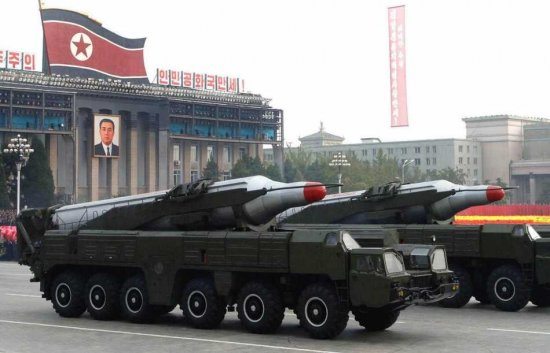North Korea fired a sixth short-range missile into the Sea of Japan on Monday, defying warnings from UN chief Ban Ki-moon and South Korea after a flurry of similar tests at the weekend.
The latest firing was confirmed by the South’s Joint Chiefs of Staff (JCS), who said it was unclear if the North was testing guided missiles or rockets from multiple launchers.
“North Korea launched two projectiles on Monday — one in the morning and the other in the afternoon,” a JCS spokesman told AFP.
Such drills are not unusual but they come as the Korean peninsula is only just emerging from a period of particularly elevated military tensions triggered by the North’s nuclear test in February.
In a statement on Monday, Pyongyang angrily rejected criticism that the missile exercises were a deliberate attempt to kick off a fresh cycle of tensions.
“Military training … is the indisputable right of any sovereign nation,” the North’s Committee for the Peaceful Reunification of Korea said.
“Viciously taking issue with our military’s rocket firing training … is an unacceptable challenge and a wanton provocation,” it said.
North Korea fired three short-range guided missiles off its east coast on Saturday and another on Sunday.
South Korea had labelled the weekend tests “deplorable”, while UN chief Ban Ki-moon urged Pyongyang to exercise restraint.
“It is time for them to resume dialogue and lower the tensions,” Ban said in Moscow on Sunday.
North Korea argues that the real provocation is coming from South Korea and the United States, which have carried out a series of small and large-scale joint military drills in recent months.
The joint exercises have included the use of nuclear-capable B2 stealth bombers and, most recently, the participation of the nuclear-powered aircraft carrier USS Nimitz.
On Monday South Korea’s President Park Geun-Hye’s top security advisor, Kim Jang-Soo, again urged Pyongyang to desist from any more drills.
“Whether it’s just a test or a show of force, the North should not get involved in actions that create tension,” Kim said.
At one point, North Korea had been primed to test a pair of medium-range missiles, but US intelligence said the weapons were removed from their launch pads in early May.
The most significant fallout from the recent months of sabre-rattling has been the withdrawal of both sides from the Kaesong joint industrial park which lies 10 kilometres (six miles) over the border in North Korea.
Established in 2004 as a rare symbol of inter-Korean cooperation, Kaesong had come through previous crises on the Korean peninsula unscathed.
In early April, however, the North ordered all of its 53,000 laborers working for the 123 South Korean companies in Kaesong not to report to work. Seoul responded by pulling out its personnel soon afterwards.
South Korea has proposed formal talks on recovering stockpiles of raw materials and finished goods the South Korean firms left behind, but Pyongyang on Monday suggested any dialogue should focus on the overall future of the project.
“A more pressing issue than removing the finished goods is whether the complex will collapse or not,” said a spokesman for the North side of the management committee that runs Kaesong.
Neither of the two Koreas has officially declared the complex closed, and Seoul has continued to supply a minimum amount of electricity.
Owners of the South Korean firms in the complex said Monday that they were the victims of a catfight between Seoul and Pyongyang.
“Entrepreneurs and company employees are being squeezed by the emotional struggle between the governments of the two Koreas,” an association representing the owners’ interests said in a statement.
Some 200 CEOs and managers filed a request Monday to visit the complex, but the South’s Unification Ministry said North Korea would first have to agree to working-level talks.










